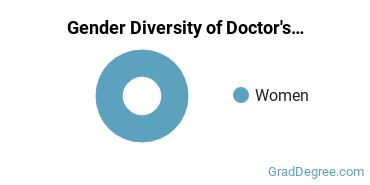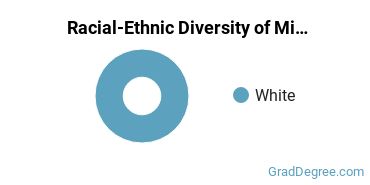Doctor’s Degrees in Military Applied Sciences
Featured schools near , edit
Education Levels of Military Applied Science Majors
During the most recent year for which data is available, 1 people earned their doctor's degree in military applied science. This makes it the 277th most popular doctor's degree program in the country.
The following table shows the number of diplomas awarded in military applied science at each degree level.
| Education Level | Number of Grads |
|---|---|
| Master’s Degree | 94 |
| Graduate Certificate | 35 |
| Doctor’s Degree | 1 |
Earnings of Military Applied Science Majors With Doctor’s Degrees
At this time, we do not have the data to estimate the median earnings for this class of people.
Student Debt
We do not have the data to estimate the median debt for this class of people.
Student Diversity
More men than women pursue doctor's degrees in military applied science. About 100.0% of graduates in this field are male.
| Gender | Number of Grads |
|---|---|
| Men | 1 |
| Women | 0 |

The racial-ethnic distribution of military applied science doctor’s degree students is as follows:
| Race/Ethnicity | Number of Grads |
|---|---|
| Asian | 0 |
| Black or African American | 0 |
| Hispanic or Latino | 0 |
| White | 0 |
| International Students | 1 |
| Other Races/Ethnicities | 0 |

Most Popular Military Applied Science Programs for Doctor’s Degrees
There are 1 colleges that offer a doctor’s degree in military applied science. Learn more about the most popular 1 below:
Naval Postgraduate School tops the list of the most popular school in the U.S. for military applied science majors who are seeking their doctor's degree. During the most recent year for which we have data, 0 people received their doctor's degree in military applied science from Naval Postgraduate School.
Military Applied Science Concentrations
| Major | Annual Degrees Awarded |
|---|---|
| 2 | |
| 1 |
Explore Major by State
Alabama
Arkansas
Connecticut
Florida
Idaho
Iowa
Louisiana
Massachusetts
Mississippi
Nebraska
New Jersey
North Carolina
Oklahoma
Rhode Island
Tennessee
Vermont
West Virginia
Related Majors
Below are some popular majors that are similar to military applied science that offer doctor’s degrees.
| Major | Annual Degrees Awarded |
|---|---|
| 2 |
References
*The racial-ethnic minority student count is calculated by taking the total number of students and subtracting white students, international students, and students whose race/ethnicity was unknown. This number is then divided by the total number of students at the school to obtain the percentage of racial-ethnic minorities.
More about our data sources and methodologies.
Featured Schools
 Request Info
Request Info
|
Southern New Hampshire University You have goals. Southern New Hampshire University can help you get there. Whether you need a bachelor's degree to get into a career or want a master's degree to move up in your current career, SNHU has an online program for you. Find your degree from over 200 online programs. Learn More > |

